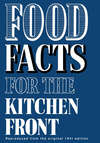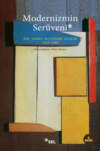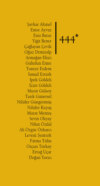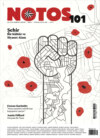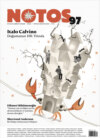Kitabı oku: «Food Facts for the Kitchen Front»
Food Facts for the
Kitchen Front
Filled with no-nonsense war-time recipes, using pure ingredients and simple preparation methods.
Includes valuable information on food groupings and food factors, vital for a healthy and balanced diet.

Table of Contents
Cover Page
Title Page
A NOTE ON FOOD VALUES
A NOTE ON FOOD FACTORS
VEGETABLES
POTATOES
SALADS
HOME GROWN HERBS
FISH
MEAT
OATMEAL
SOUP
BREAD AND BAKING
SAUCES
FRUIT
PACKED MEALS
HAY-BOX COOKING
INDEX
Copyright
About the Publisher
A NOTE ON FOOD VALUES
ONE result of war-time feeding is that we all know something about food values. We have learnt that the foods necessary to health fall into three groups: Energy Foods, Body-building Foods, and Protective Foods.
Let us examine them briefly, with special attention to the foods that are always plentiful. Then we shall see how to eat well-balanced meals that will keep us fit.
GROUP ONE—ENERGY FOODS
Our appetite guides us to eat these foods. We need not plan for Energy Foods in our meals. When we are hungry we naturally want to eat starchy foods, fats and sugar.
Starchy Foods.—Potatoes, Bread and Cereals of all kinds satisfy our hunger and are in good supply.
Fats.—Butter, Margarine, Dripping, Bacon, etc., are still sufficient for our health. We shall not suffer in any way from eating rather less fat than formerly, provided that we eat more green vegetables.
Sugar.—Sugar, dried fruits, honey, jam and confectionery are valuable, but we should not exaggerate their importance. When we talk about “needing sugar for energy” we are inclined to overstate the case. Potatoes and bread will provide all the energy we want.
GROUP TWO—BODY-BUILDING FOODS
These, repairing the tissues, are particularly important for growing children. The main foods in this group are:
Meat, Fish, Eggs, Cheese and Milk.
We have a second line of defence in other more plentiful foods which have body-building value. They are:
Oatmeal.
Wheatmeal Bread and Flour.
Dried Peas, Beans and Lentils.
Potatoes.
Green Vegetables.
GROUP THREE—PROTECTIVE FOODS
We have never eaten enough protective foods. Even in peace-time doctors have urged us to eat more of them. They guard us against infection; they help us to fight tiredness and depression, they keep our complexions clear. Their vitamins and essential mineral salts are indispensable in our daily diet.
It is extremely fortunate that, placed high in this group, there should be some of the foods that are plentiful throughout the year:
Wheatmeal Bread, Oatmeal, Milk, Potatoes, Carrots, Green Vegetables (fresh or canned), Root Vegetables and Raw Salads.
In these days, when we are all beginning to concern ourselves with essentials and to discard the things that do not matter, it is necessary to remember these two facts:
1. What we can get is good for us.
2. A great deal of what we cannot get is quite unimportant.
A NOTE ON FOOD FACTORS
THOUGH we cannot expect to become scientific experts overnight, it is useful for us to learn something about calories, proteins, vitamins and mineral salts. We ought to know what they are and what they do to our bodies.
CALORIES
Calories are units of heat, which we liberate in our body-tissues when we eat Energy Foods (Starches, Fats and Sugar). Our daily caloric requirement varies according to our sex and occupation. Men need more calories than women do. People whose work calls for great physical activity need more calories than are required by sedentary workers.
PROTEINS
Food is a mixture of chemical substances, and the chemical constituent known as protein builds our muscles and tissues. Proteins are therefore particularly important to growing children.
Animal proteins are derived from the main body-building foods: Meat, Fish, Eggs, Milk and Cheese. Vegetable proteins are obtained from our “second line of defence”:
Oatmeal.
Wheatmeal Bread.
Potatoes.
Green Vegetables.
Dried Peas, Beans and Lentils.
VITAMINS
Vitamins are food factors necessary to growth and nourishment.
Their existence was discovered when scientific research proved that artificial food mixtures (containing all the known nutritive factors in a purified state) were unable to support growth without the addition of a natural food, such as milk.
It was obvious then that natural foods must contain unknown essential food factors. These are now known as vitamins. The most important are Vitamins A, B and C.
Vitamin A plays an important part in building up our resistance to infection. It is essential for the adapting of the eye to sudden changes of light. “Night blindness” may be due to a deficiency of Vitamin A.
Good sources of this vitamin are Spinach, Carrots, Cabbage, Peas and Beans. Halibut liver oil and Cod liver oil, Herrings, Margarine.
Vitamin B is essential for the correct functioning of the nervous system, which influences our digestive system.
Good sources of the vitamin are Wheatmeal Bread and Flour, Oatmeal, Vegetable Extract.
Vitamin C maintains the correct structure of the tissue of the blood-vessels. Complete absence of this vitamin from the diet leads to scurvy.
Good sources of the vitamin are Potatoes, Green Vegetables (especially raw), Root Vegetables (especially raw) and Fruit.
Vitamin values are expressed, not in ounces nor grammes but in International Units. Since our daily requirement of Vitamin A is taken as about 5,000 International Units, we may find it useful to remember that:
I oz. Carrots contains 540 International Units of Vitamin A.
I oz. Boiled Cabbage contains 356 International Units of Vitamin A.
By eating half a pound of carrots and four ounces of cabbage we should almost have satisfied our total daily requirement.
Our daily requirement of Vitamin B is much smaller. It is taken as 500 International Units. Here we may find it useful to remember that:
I oz. Oatmeal contains 92 International Units of Vitamin B.
I oz. Wheatmeal Bread contains 28 International Units of Vitamin B.
By eating four ounces of oatmeal and four ounces of wheatmeal bread we should again be very near the figure of our total daily requirement.
Our daily requirement of Vitamin C is taken as 1,250 International Units.
Here we may find it useful to remember that:
I oz. Potatoes contains from 105–140 International Units of Vitamin C.
I oz. Boiled Cabbage contains 95 International Units of Vitamin C.
By eating half a pound of potatoes and a quarter of a pound of cabbage we can satisfy our total daily requirement of Vitamin C.
MINERAL SALTS
Iron and Calcium.—We should be careful to guard against a deficiency of Iron in our foods. Iron is an element of great importance in the body, specially to women and girls, who need it to safeguard them against tiredness and anaemia.
Good sources of Iron are Wheatmeal Bread, Oatmeal, Watercress and Spinach.
Calcium is necessary to our bodies for building bones and teeth. This naturally means that it is of great importance to growing children, to expectant and nursing mothers.
Good sources of Calcium are Milk and Green Vegetables.
VEGETABLES
IT WAS once said that English cooking demanded a Society for the Prevention of Cruelty to Vegetables. But now we no longer regard them as a mere accompaniment to a meat dish—a food to be cooked in water and served haphazardly. We are learning to value them highly and cook them well.
We can produce enough vegetables in our country to feed the whole nation. Last year saw our production enormously increased by the Dig for Victory Campaign. This year, as the diggers grow more numerous and more experienced, we shall increase it still further.
We recognise the importance of vegetables as a Protective Food. We know that some (potatoes for example) are good Energy Food also.
Not only are they valuable food, but properly cooked or attractively served raw, vegetables are delicious, full of variety, and capable of being used in a number of different ways.
A salad can be as pretty as a bunch of flowers, yet do you as much good as a steak and kidney pudding. Even if you like a meat and vegetable meal best, don’t forget that you can feed well from a course of vegetables alone. Or, if you are near the end of your meat ration, an extra vegetable will transform it into a substantial meal.
The main thing to remember in cooking vegetables is to bring them to table as near their normal selves, and with as much of their natural goodness as possible. Cook them in a steamer if you can; they will retain more flavour.
Wash all green vegetables thoroughly and soak them in cold water with a teaspoon of salt for not more than half an hour. Then shred them finely. If you are going to “boil” them, go easy with the water. Put them into a saucepan with not more than a teacupful of boiling water and a pinch of salt. If you can, add a fleck of margarine or cooking fat on top, though in these rationed days you may not be able to spare it.
Replace the lid and boil steadily for 10–15 minutes, shaking the pan to keep the vegetables clear. Drain the vegetables well and serve them hot. Any stock that remains should be strained off and used for gravy or soup.
Use the outside leaves of green vegetables. Shred them and put them into soup, or add them shredded to a hot-pot.
For root vegetables—carrots, turnips, swedes, etc.—the most important thing to remember is to scrape or peel them lightly, taking as little off the edible parts as possible. Steam them if you can, boil them in a very little salted water if you can’t. They are good, too, baked round the joint or in a very little water in a dish in the oven. The only exception to this rule is beetroot (see p. 15).
ARTICHOKES (Jerusalem)
These are good winter vegetables, rarely used as much as they might be.
If the artichokes are dipped in very hot water prior to peeling, the skin scrapes off very easily, and with little waste. Place them immediately into cold water to which a little vinegar has been added, to save them from discolouring.
They can then be steamed, or boiled in a little salted water. For a more nourishing dish, cook them in sufficient boiling milk and water, in equal quantities, to just cover, add a pinch of salt and cook steadily for 15–20 minutes with the lid on the saucepan. Remove the vegetables and thicken the stock as described on page 115. Then replace the artichokes in the sauce, heat up and serve.
ARTICHOKE SOUP
1 pint vegetable boilings or water.
1/2 pint milk.
1 oz. cooking fat or margarine.
11/2 lb. artichokes.
A little chopped spring onion.
Seasoning of pepper and salt.
Peel and slice the artichokes as above and chop the onion. Toss the vegetables in the melted fat, lid on the pan, until the fat is absorbed and the flavours are well drawn. Pour on the water or vegetable liquor, add a pinch of salt, replace the lid and allow to simmer for half an hour, or until the vegetables are tender.
Pass them through a sieve, or beat to a puree with a wooden spoon. Blend 11/2 dessertspoons of flour to a smooth cream with a little cold milk, then add some of the hot stock to it. Return all to the saucepan, stirring, bring to the boil, and simmer for at least 10 minutes. Add the remainder of the milk, reheat, season, and serve the hot soup with home-made rusks of wheatmeal bread (see p. 111, BREAD AND BAKING).
ARTICHOKES AND POTATOES IN CAPER SAUCE
1 lb. mixed cooked artichokes and potatoes.
1/2 pint white sauce to which about 2 teaspoons chopped capers or pickled nasturtium seeds and 1 teaspoon vinegar have been added.
Browned breadcrumbs.
A few shavings of cooking fat.
Dice the cooked artichokes and potatoes into neat cubes, placing them in a fireproof dish. Prepare the sauce, using part artichoke stock and part milk (see p. 115).
Pour the hot well-seasoned sauce over the vegetables, sprinkle with browned crumbs, dot here and there with cooking fat, and heat through in a moderately hot oven, or under a well-heated grill, until crisp-crusted and golden. Serve hot.
ARTICHOKE CHIPS
Another appetising way to cook this vegetable is to cut across the artichoke to make thinnish slices. These can be fried, like potato chips, in a little fat, then drained, salted, and seasoned with pepper, and perhaps a sprinkling of finely “powdered” cheese, if it can be spared. (The dry, next-to-the-rind pieces of hard cheese grate down excellently for this.)
ARTICHOKE CRISPS
Peel the artichokes and slice very thinly. Soak in wellsalted water for about half an hour. Dry on a wire cake tray in a very slow oven until quite crisp (about 3 hours). Store in air-tight tins. These crisps are as delicious as potato crisps and have a pleasant flavour.
ASPARAGUS
Unless home-grown, asparagus is a luxury vegetable.
If buying asparagus, see that the stalks are fresh, the heads crisp and the cut ends of the stalk clear-coloured. If they are to be kept fresh for a few hours, place the stems in a jug of cold water.
To Cook.—Scrape the stem lightly with a knife, then wash in cold water. Trim the stalks to one length, and tie into conveniently-sized bundles.
Cook gently in boiling salted water, or steam in a small amount of water, with the heads emerging, until the green part of the stem is quite tender. Drain on a fish slice, and lay the bundles on slices of toast. Snip the strings and dress the tips with as much melted fat—margarine for preference—as can be spared.
BROAD BEANS
As a pod vegetable, broad beans are valuable food. They contain vitamins A, C, and B 1, and good vegetable protein. Freshly picked, when young, they are really delicious.
Steamed, or boiled in a little salted water, they soon become tender, but be sure to leave on the outer skins of the seeds. Many people make the mistake of peeling away this covering skin, which deprives the dish of much flavour and food value.
Serve cooked broad beans with a little melted fat and a sprinkling of fresh chopped parsley. When a little older, they taste good in a parsley sauce, or with piquant flavouring.
Young broad beans are also good eaten raw in a salad.
BROAD BEANS (make two meals)
When young, broad beans can be used in two ways. The pods are very tender and delicious when sliced like runner beans, simmered in salted water and dressed in exactly the same way. They are also good served in parsley sauce.
Shell the beans in the usual way and cook for the first meal. Cut the pods into strips or diagonal slices, and cook them too. When cold, the sliced pods are good dressed in mayonnaise or French dressing in salad.
BROAD BEANS (cooked in their pods)
1 lb. very young beans.
1 oz. margarine or bacon dripping.
1 oz. flour.
1 dessertspoon of finely chopped parsley.
1 gill bean liquor.
1 gill milk.
Seasoning of salt and pepper.
Trim the end from the pods and cut the beans into inch lengths. Cook in boiling salted water until tender, then drain.
Make a parsley sauce with the bean stock, fat and flour, adding the milk after the sauce has fully cooked. Shake in the chopped parsley, season with salt and pepper, and mix in the cooked beans last of all. Heat through and serve.
BROAD BEAN PUREE
When beans are a little older, they can be sieved and “creamed” to make them more attractive for table. Take a quart measure of shelled beans and steam or boil them in the usual way till tender.
Drain them, then rub them through a sieve. Take the remaining liquor and make up to the required quantity of liquid with milk, for a white sauce. Use an ounce of bacon dripping or margarine and an ounce of flour for each gill and a half of stock (for method, see p. 115), and use the sauce, after boiling and seasoning, to bring the puree to a creamy consistency.
For BROAD BEAN SALAD see p. 61, SALADS.
BROAD BEANS IN PIQUANT SAUCE
Boil the prepared beans until tender, then prepare a sauce with 1 oz. margarine or cooking fat, 1 level tablespoon flour, and 1/4 pint of stock from the beans.
Melt the fat, stir in the flour smoothly and allow them to cook together slowly. Gradually add the gill of stock, stirring until fully thickened. When returned to the boil for three minutes, season well, and add 1 tablespoon of vinegar, and 1/2 teaspoon of chopped capers.
Heat the beans in this sauce, then serve while very hot.
BROAD BEANS FOR WINTER USE
Broad beans which have been allowed to mature in their pods may be stored for winter use. Make sure they are quite dry before packing in airtight tins. Soak and cook like haricots.
FRENCH BEANS (or Runner Beans)
When young these vegetables can be cooked whole, with tops and tails removed. When older, a stringy vein develops down the ribs of the pod, which must be removed before cooking for full enjoyment.
Trim away the “strings,” then slice the bean lengthways, or break with the fingers into 2-inch lengths (this saves time), and steam or boil the vegetable until tender in a small quantity of boiling salted water. When tender and young allow them to “steam” by using very little water, and adding, if possible, a very little fat which they can absorb during the cooking. This makes them glisten well and improves their flavour. The actual cooking time varies with the age and size of the beans.
When beans are home-grown and can be gathered near the time of cooking, their full flavour and goodness can be enjoyed; for households purchasing from local markets, it is wise to select beans as crisp as possible.
When runner beans are too old for table, let them mature on the plants and then dry the beans (not the pods) for winter use.
For FRENCH AND RUNNER BEANS IN SALADS, see p. 61, SALADS.
BEETROOT
Here is a favourite vegetable that can play a number of different roles. The sugar it contains makes it acceptable for salads, whether cooked or raw, or it can be baked or fried to develop a still more attractive flavour.
In preparing the vegetable, it is important to avoid breaking the skin, or the rich red colour “bleeds” away in the cooking.
Beet tops can be used as a vegetable too, and are as delicious as spinach if steamed or boiled in a very little water.
To cook the beets, wash them well in cold water, then boil steadily in salted water for 2 hours or more with the lid on the pan, until they feel tender. Press with the back of a wooden spoon to test, but do not prod with a fork, or the juices will escape. Drain them, and peel away the skin quickly.
Ücretsiz ön izlemeyi tamamladınız.
